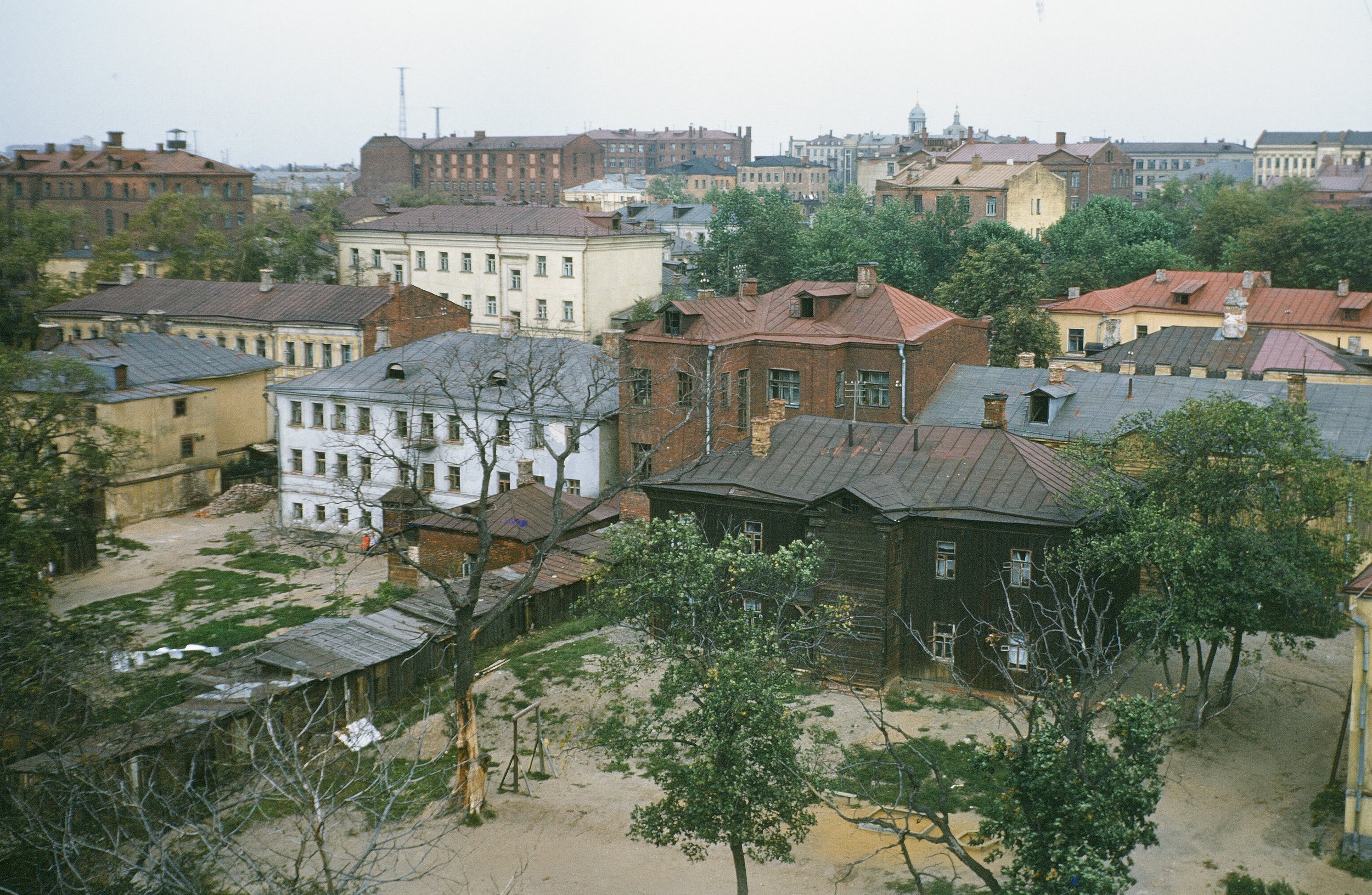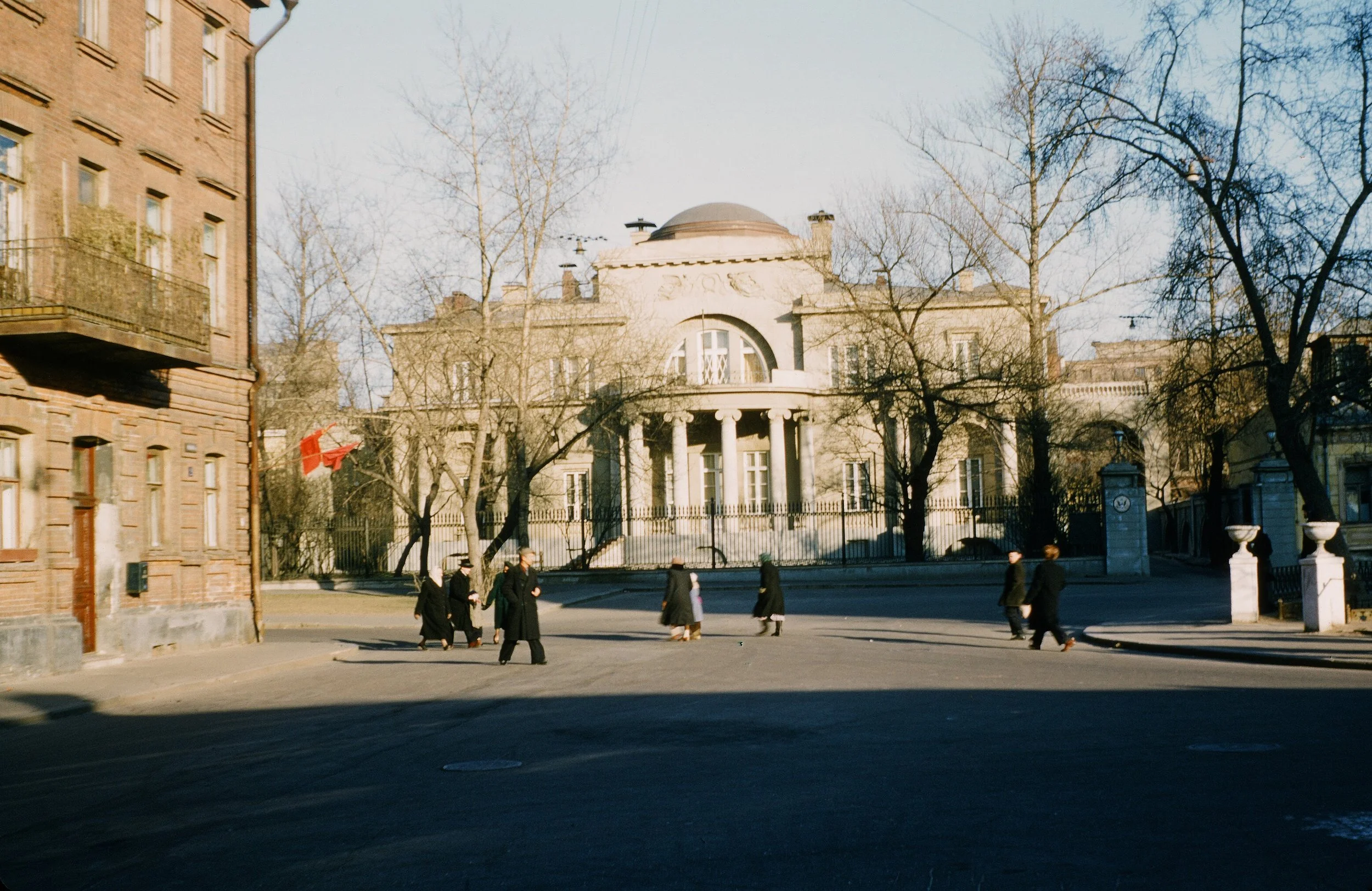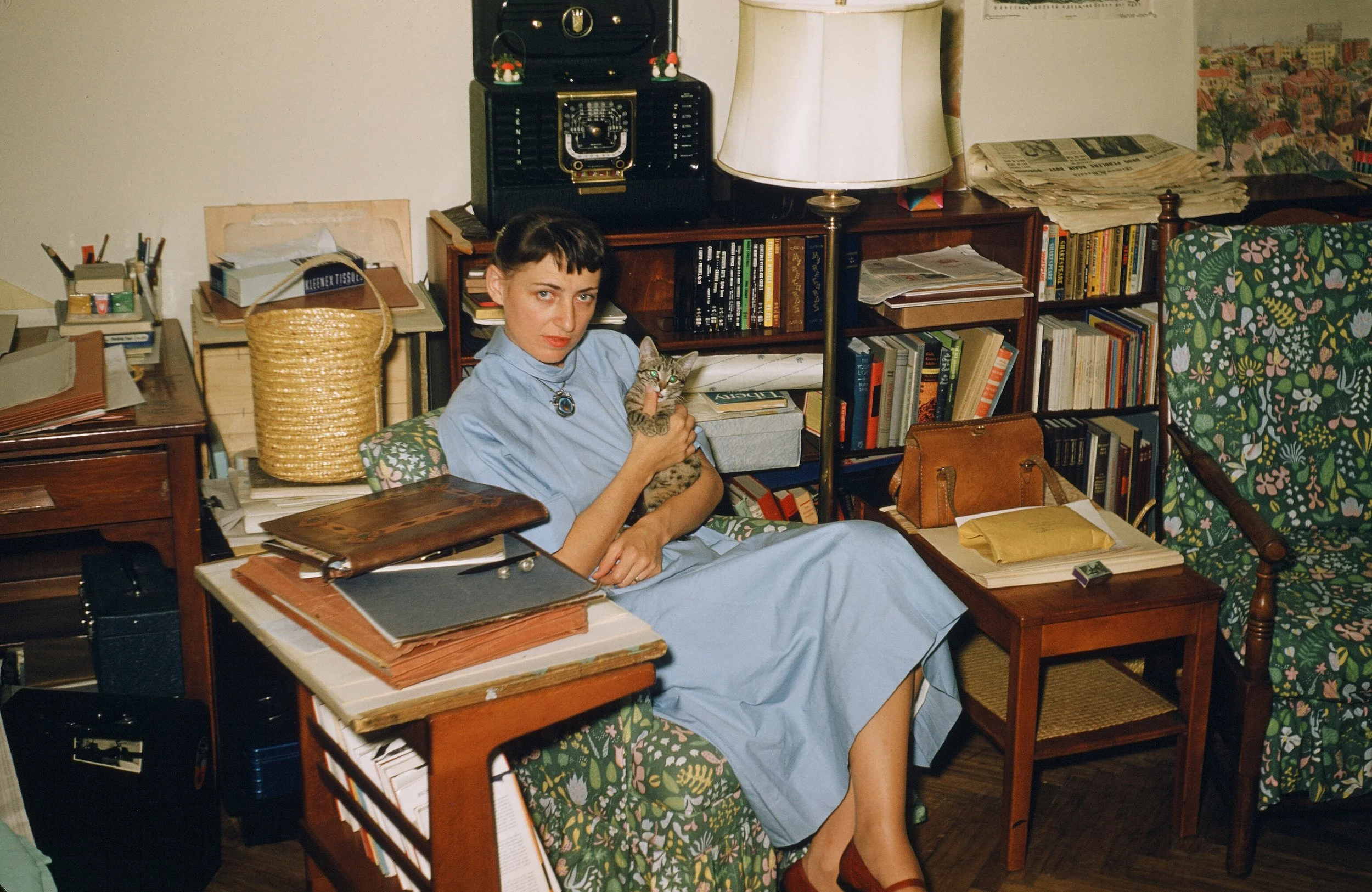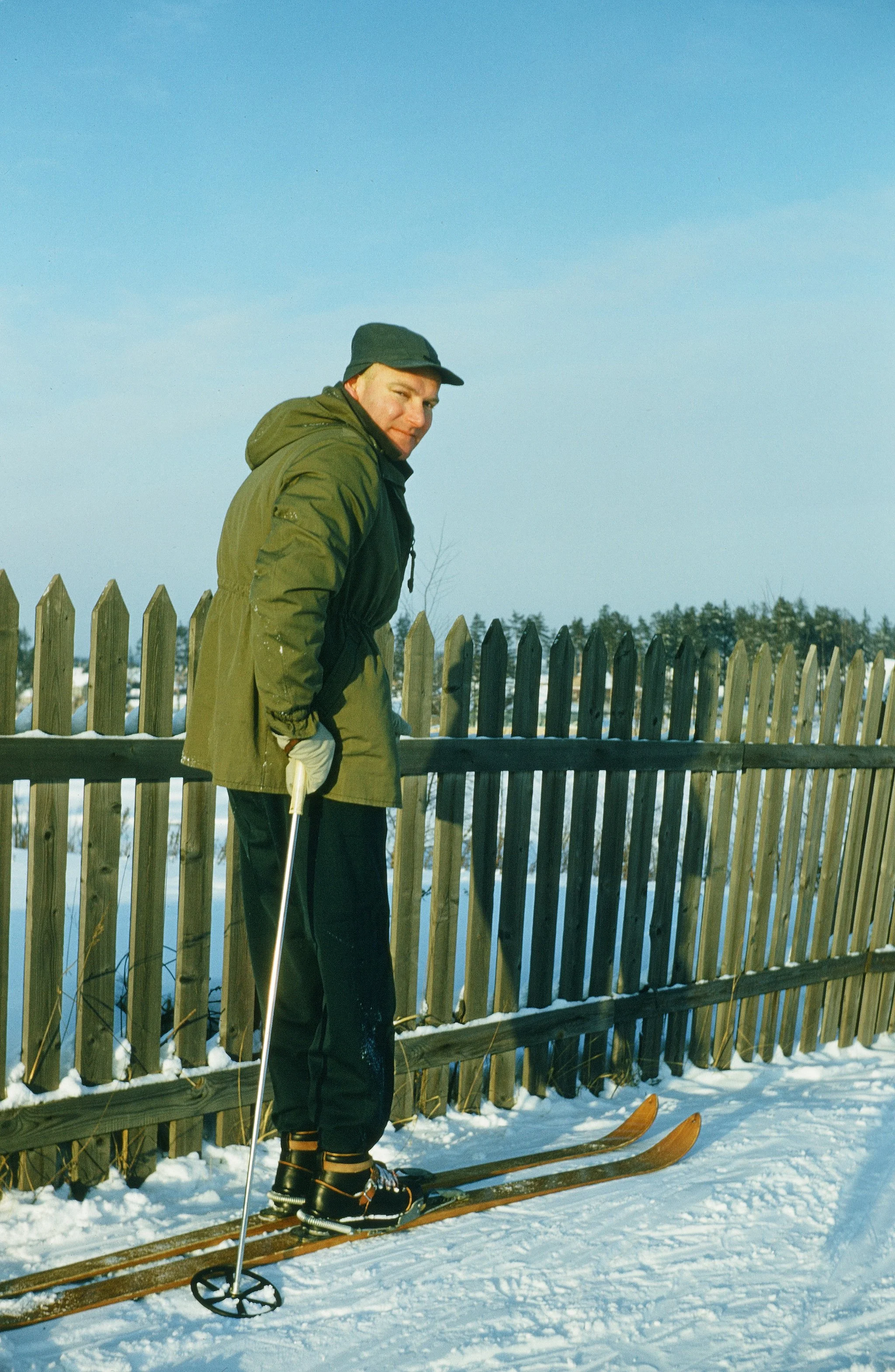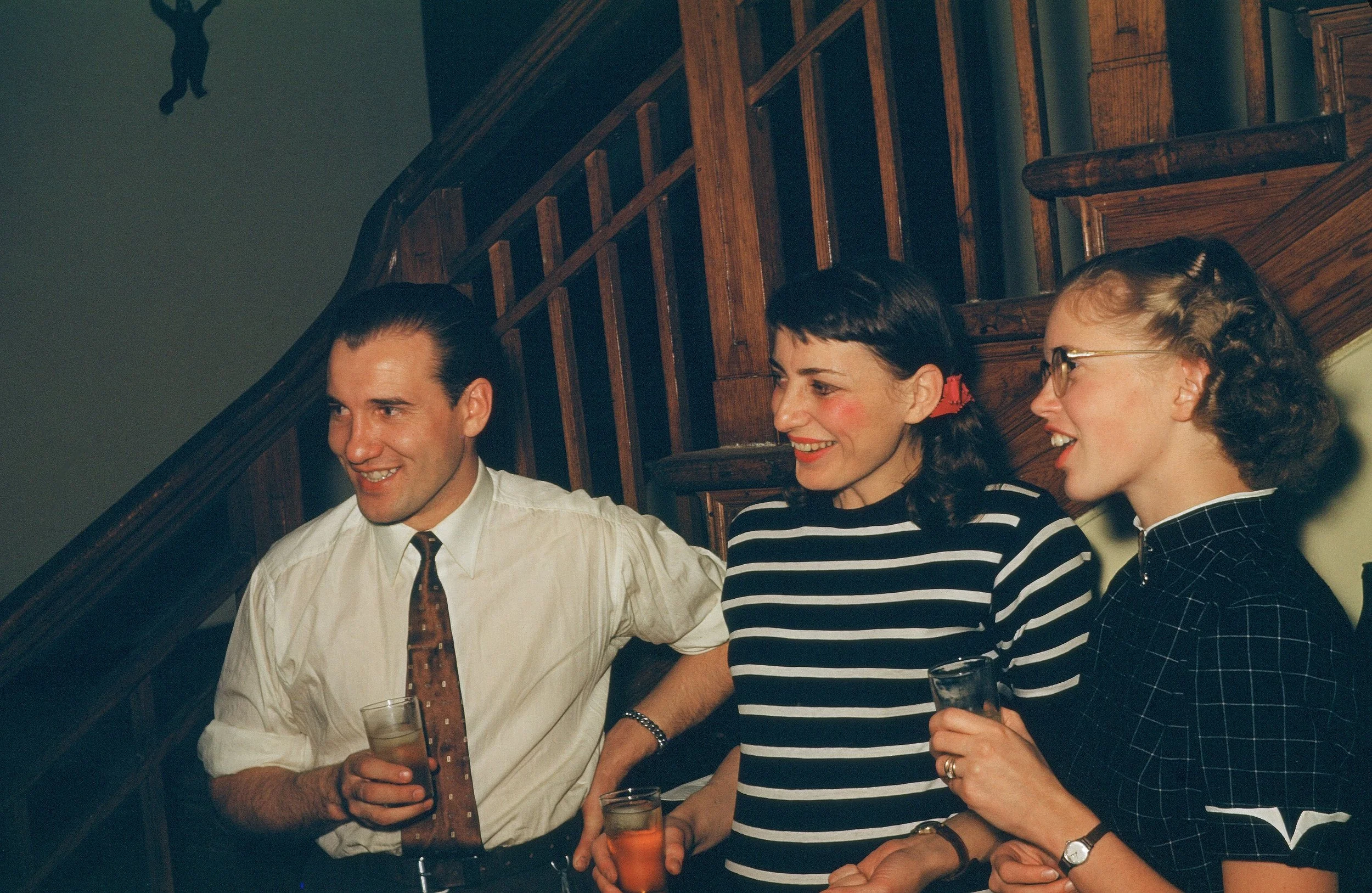At Home
Housing in Moscow was always in short supply, and not only for Soviet citizens, but for foreigners as well. The American diplomats stationed in the USSR were forever complaining about both the lack of available living space and the poor quality.
The Chancery on Mokhovaya Street had the finest apartments, but there weren’t nearly enough of them for the entire personnel. Foreigners could not rent, much less buy, apartments and had to make appeals to an agency known as Burobin—The Central Office for the Servicing of Foreigners—that had been established in 1921 to service all foreign missions, as part of People's Commissariat for Foreign Affairs. In September of that year Burobin took possession of about thirty-eight Moscow mansions for use as embassies and offices. In July 1947, Burobin was renamed, although all Americans still referred to the agency by its original name.
Everything the Americans needed had to be acquired through Burobin. Whether it be an apartment, house staff, theater tickets, repairmen, even a small orchestra for an embassy party—all the necessities of life depended on the goodwill of the officials at Burobin. Working with the agency was a constant source of frustration. “Burobin is a very large, unwieldly and suspicious organization,” remarked Walter Bedell Smith, U.S. ambassador from 1946-49. His opinion was shared by everyone in the embassy.
Through Burobin the U.S. government leased a number of properties in the capital. In addition to the Chancery, there was the ambassador’s residence, the so-called Spaso House, a large, if rather rundown Neo-Classical mansion on Spasopeskovskaya Square, still used by the Americans today; there was the “American House,” a sort of barracks on the banks of the Moscow River where most of the enlisted Army and Navy personnel and male clerical staff lived, which was in appalling condition with a leaky roof, broken windows, and plaster falling off the walls.
There was a two-story stucco building they called “Spiridonovka House,” or “Spiro,” for short; there was a small house on Vesnina Street (now Denezhnyi Lane) that housed the embassy’s cultural and information activities; and then there was 28 Khlebnyi Lane for the officers, which had been Martin’s initial home in Moscow. At other times the U.S. rented apartments on Sadovaya-Samotechnaya and Shchuseva Street (now Granatnyi Lane).
Even with these buildings, the Americans were forever short of living quarters, and so Burobin made available for rent rooms in a number of Moscow hotels, such as the National, the Savoy, and the Metropole. Lydia Kirk, wife of Ambassador Alan Kirk (1949-51), described these hotels as “dreadful places” and the Americans forced to live in them as “unfortunate.”
The National, the Metropole, and the Savoy are dismal spots, dusty and musty, with remnants of pre-revolutionary trappings that haven’t been aired or even shaken since 1917.
The rooms at the Metropole, by American standards, were cramped. The Russian way of measuring housing in square meters per person and not number of rooms was baffling. Martin and Jan, like the others at the Metropole, had to do their cooking over a hot plate and wash their dishes and clothing in the bathtub. Everyone was convinced the rooms were bugged. New York Times reporter Harrison Salisbury also lived in the Metropole. He noted that the lobby was always full of MVD agents watching who was coming and going.
Things improved for Martin and Jan in the middle of July 1952 when they moved to an apartment at 13 Narodnaya Street. The building had recently been completed and housed foreigners from various countries, both diplomats and reporters. The rents amounted to $450 a month, according to the exchange rate at the time, what Lydia Kirk described as “outrageous.” The American service attaché Leslie C. Stevens visited his Danish counterpart, Captain Henrik Madsen, and his wife, Edith, around this time, at Narodnaya:
Although the house is so new that construction is still going on on one wing, that which has been built is already sagging and falling to pieces. The entrance was bad, worse than that of a Western tenement, but the Madsens’ apartment was very livable. From its windows, the surrounding part of Moscow looked like a frontier town, for there were big areas of wooden sheds and ramshackle shelters in all directions, with the Moskva River shining as it wound its broad way through them all.
A dozen or so women were busily shoveling dirt from the excavation for the unfinished wing of the house into a line of trucks, and just beyond them was an equally characteristic Soviet scene. It was difficult at first glance to pick out any sort of order from the jumble, but the eye could follow a double line of fencing which enclosed a large area full of sheds and temporary wooden buildings. On the corners of this irregular fence were little wooden booths, and in each booth was a guard with a rifle. It was a prison camp, this time for Soviet citizens.
For Martin and Jan, the apartment on Narodnaya Street was a huge improvement over their room in the Metropole. This was to be their home until the spring of 1953 when they moved into an apartment in the newly constructed U.S. embassy on Tchaikovsky Street.
Martin liked to take pictures and film from their upper-story window and he photographed their everyday life here. One photograph shows Jan with their adopted kitten, Malenkaya. Many of the Americans, especially those who lived on Mokhovaya, which was, apparently, overrun by cats, adopted pets during their stay.
Behind Jan is a Zenith Super Trans-Oceanic Portable shortwave radio, which the Zenith company marketed to the U.S. diplomatic corps as the perfect radio for staying up to date on news from back home. Much of the time the signal was jammed by the Soviet government, which meant nothing could be heard on the radio but a loud whirring sound. Both Martin and Jan spent most of their days working at the Chancery on Mokhovaya, where Jan was employed as a secretary. They did, however, meet their Russian language tutor here at home, twice weekly at noon.
The Americans had almost all of their food and drink shipped to Moscow from the United States. This was done in part since they didn’t understand the Russian diet and didn’t care for the hassle of negotiating Soviet stores, but also because the official exchange rate made Soviet goods extremely expensive. In the early 1950s, the Soviet government set the rate at 4 rubles to the dollar, which meant food at the markets cost the Americans more than back home in the States.
One of the Americans’ great pleasures was the dacha rented at Tarasovka. Set amid a grove of pine trees on a hillside overlooking a little stream, the dacha was a relaxing place of escape from Moscow. In the summer, they kept a vegetable garden, played tennis and badminton, and had picnics; in the winter, they went cross-country skiing.
Back in Moscow, Martin and Jan loved to go out to the theater, whenever they could get tickets, which was not easy. Jan thrilled at the opportunity to see Galina Sergeevna Ulanova dance at the Bolshoi and loved attending the gypsy theater and hearing the Red Army Chorus perform, which she called “terrific.”
One night they went to see the movie “Songs of ” and Jan loved the film, especially the singing of Maxim Dormidontovich Mikhailov, star of the Bolshoi Theater. The one part of going out at night she didn’t care for was how they were stared at by the Russians. At times, she wrote in a letter to her parents, “I felt as though we were the show.”
The Americans’ life, however, was fully centered inside the western diplomatic community, or ghetto. Although they socialized with western Europeans, the English, and some members of the non-aligned countries, for the most part the Americans stuck to themselves.
There were movie nights at the American House and Spaso House, teas, luncheons, and dinner parties galore. The social whirl was non-stop, and the alcohol flowed and flowed. James Vivian Davidson-Houston, a British service attaché in Moscow in the mid-1950s, wrote of the unending circle of parties among the Westerners. The constant entertaining “involved meeting the same people over and over again [...]
“Dinners involved a constant, but at the same time consistent, strain on the liver; for protocol demanded that every party should first consume cocktails and sherry in the drawing-room and at the table imbibe in succession champagne, white wine, red wine, champagne and liqueurs.”
The wife of one American attaché described the amount of alcohol consumed as “harrowing.” Typical was the following dinner party for a few embassy couples: “Before dinner we had cognac alexanders; at dinner vodka with the blini; white wine with the chicken; champagne with dessert; cordials with coffee; later whiskey or Scotch hi-balls.”
The poor woman could barely keep up with the booze. She woke up late the next morning to her head going “BOING! BOING!” No doubt a great many heads in the American embassy experienced the same feeling during the Manhoffs’ tour in the Soviet Union.
